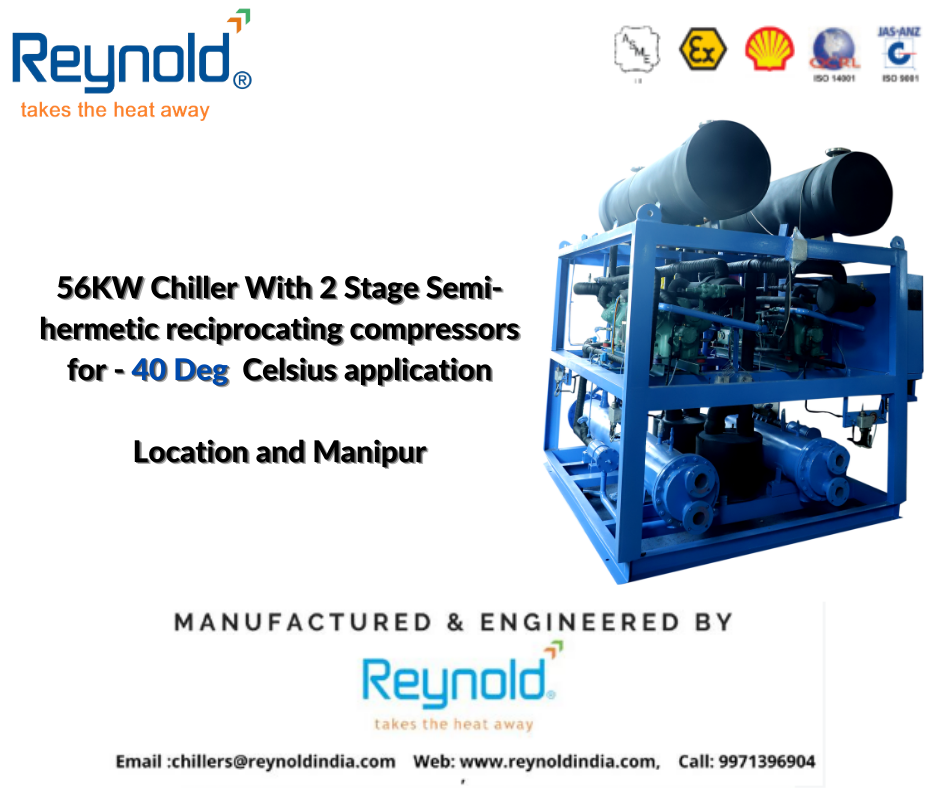Which gas is used in chiller?
Ammonia (R717) is a type of refrigerant that belongs to the class of halogen-free chemicals. It is the most popular refrigerant used in chiller plants. It has the highest heat absorption rating making it ideal for use in small, portable chiller units, eliminating the need for large cooling plants.

Chillers use various refrigerant gases to facilitate the cooling process. The choice of refrigerant depends on factors such as the application, efficiency, environmental impact, and regulatory considerations. As of my last knowledge update in January
2022, some common refrigerants used in chillers include:
Hydrochlorofluorocarbons (HCFCs): Examples include R22 (chlorodifluoromethane). However, many HCFCs, including R22, are being phased out due to their ozone-depleting potential, as mandated by international agreements like the Montreal Protocol.
Hydrofluorocarbons (HFCs): HFCs are commonly used as replacements for HCFCs because they do not deplete the ozone layer. Examples include R134a (1,1,1,2-tetrafluoroethane), R410A, and R407C. However, some HFCs have high global warming potential (GWP), and there is ongoing global effort to transition to more environmentally friendly alternatives.
Hydrocarbons (HCs): Hydrocarbons like propane (R290) and isobutane (R600a) are considered environmentally friendly due to their low GWP. However, they are flammable, so safety precautions must be taken.
Ammonia (R717): Ammonia is an efficient and environmentally friendly refrigerant with zero ozone depletion potential and low GWP. It is commonly used in industrial applications but may not be suitable for all types of chillers due to its toxicity and flammability.

Carbon Dioxide (CO2 or R744): Carbon dioxide is gaining popularity as a refrigerant in some applications, particularly in commercial and industrial settings, due to its low environmental impact and favorable thermodynamic properties.
It’s important to note that the refrigerant landscape is evolving, and regulations may impact the availability and use of certain refrigerants. Additionally, newer and more environmentally friendly refrigerants are being developed as the industry
moves towards sustainability. Always consult the chiller manufacturer’s specifications and local regulations to determine the appropriate refrigerant for a specific application.



